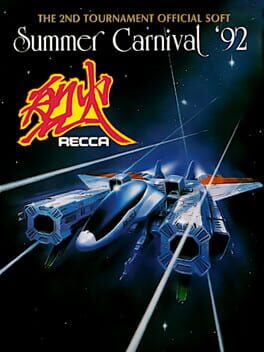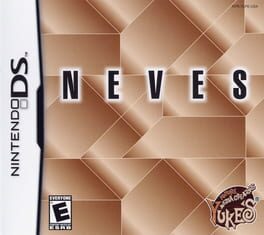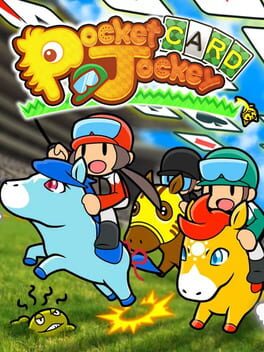DocHardware
7 reviews liked by DocHardware
Indie devs are so cool...
Neves
2007
Dissection puzzles have existed at least as long as recorded history, probably. In brief: a dissection puzzle is a set of tiles that can be assembled to create at least two (but usually more) different configurations of geometric shapes. It’s an idea so simple that variations of it appeared in at least two different parts of the world completely independent of one another. In Ancient Greece, dissection puzzles that visually illustrate the Pythagorean theorem were developed, and are believed to be instrumental to its proof as a fundamental relation of geometry. In China, a type of dissection puzzle known as the tangram has origins in oddly shaped modular banquet tables of the Song dynasty, meant to be moved around and arranged into fun shapes to entertain guests.
How exactly dissection puzzles made their way to Japan is unclear. In 1935, Hanayama Toys manufactured a dissection puzzle made of wooden blocks called the Lucky Puzzle and codified the version of the game that would remain popular in the Land of the Rising Sun to this day. Likely based on the tangram, it bears a remarkable similarity to its Chinese cousin. It’s composed of seven pieces, just like a tangram, but has an elegant self-symmetry that makes it unique from almost all other dissection puzzles.
In Japan, the Lucky Puzzle is recognizable enough that no explanation is needed. So in November of 2007, when a Nintendo DS game based on the classic brain teaser was released, they simply only needed to call it Lucky Puzzle DS. However, North America required a different strategy. Dissection puzzles reached western shores at various points in history, but failed to establish themselves as popular choices for would-be brainiacs. Rather than call it what it is, Osaka-based publisher and developer Yuke's invented the nonsense word Neves to adorn the front cover, similar to other puzzle games on the system. (Polarium, Zenses, and Magnetica, to name just a few of many examples.)
Even without the strong cultural recognition, Neves is intuitively easy to pick up and play. Following a brief tutorial, you’re ready to get right into snapping together shapes. The main attraction is the “Silhouettes?” mode, which is a digital refresh of a Lucky Puzzle picture book. You’re provided with outlines of the solution you’re tasked to replicate, and you have an unlimited amount of time to flip and rotate blocks until you figure it out. The puzzles themselves run a good gamut of difficulty, from ones you can solve at a glance to others that will have you fitting shapes together in every possible configuration and still scratching your head. On a few occasions, I even encountered a version of the famous tangram paradox, in which a construction of pieces seems to be an impossible subset of another. Very cool!
Neves does, however, ignore an important element of dissection puzzles: the ability to create your own silhouettes and challenge other players to mirror them. Perhaps this wasn’t possible due to the medium or too complicated for the type of budget the developers were working with, but Neves does attempt to offset this shortcoming with a couple of additional game modes. There are timed versions of each puzzle, as well as a “7 Steps” mode in which each block you place can’t be moved once it’s glued down.
Due to its novel form factor and tactile controls, the Nintendo DS would end up being an incredible platform for puzzle games. Untethered from the need to interface with games through the mechanical presses of buttons alone, it became possible for your hands to interact with puzzles almost as quickly as your brain could parse through them. Neves doesn’t make the experience perfectly seamless (the flipping and rotating can be a little clunky), but one need only compare to games like Tangram for the Amiga or Daedalian Opus to see how quickly things speed up. It’s a surprisingly solid offering, but then again, it does have the advantage of a few millennia of game design.
How exactly dissection puzzles made their way to Japan is unclear. In 1935, Hanayama Toys manufactured a dissection puzzle made of wooden blocks called the Lucky Puzzle and codified the version of the game that would remain popular in the Land of the Rising Sun to this day. Likely based on the tangram, it bears a remarkable similarity to its Chinese cousin. It’s composed of seven pieces, just like a tangram, but has an elegant self-symmetry that makes it unique from almost all other dissection puzzles.
In Japan, the Lucky Puzzle is recognizable enough that no explanation is needed. So in November of 2007, when a Nintendo DS game based on the classic brain teaser was released, they simply only needed to call it Lucky Puzzle DS. However, North America required a different strategy. Dissection puzzles reached western shores at various points in history, but failed to establish themselves as popular choices for would-be brainiacs. Rather than call it what it is, Osaka-based publisher and developer Yuke's invented the nonsense word Neves to adorn the front cover, similar to other puzzle games on the system. (Polarium, Zenses, and Magnetica, to name just a few of many examples.)
Even without the strong cultural recognition, Neves is intuitively easy to pick up and play. Following a brief tutorial, you’re ready to get right into snapping together shapes. The main attraction is the “Silhouettes?” mode, which is a digital refresh of a Lucky Puzzle picture book. You’re provided with outlines of the solution you’re tasked to replicate, and you have an unlimited amount of time to flip and rotate blocks until you figure it out. The puzzles themselves run a good gamut of difficulty, from ones you can solve at a glance to others that will have you fitting shapes together in every possible configuration and still scratching your head. On a few occasions, I even encountered a version of the famous tangram paradox, in which a construction of pieces seems to be an impossible subset of another. Very cool!
Neves does, however, ignore an important element of dissection puzzles: the ability to create your own silhouettes and challenge other players to mirror them. Perhaps this wasn’t possible due to the medium or too complicated for the type of budget the developers were working with, but Neves does attempt to offset this shortcoming with a couple of additional game modes. There are timed versions of each puzzle, as well as a “7 Steps” mode in which each block you place can’t be moved once it’s glued down.
Due to its novel form factor and tactile controls, the Nintendo DS would end up being an incredible platform for puzzle games. Untethered from the need to interface with games through the mechanical presses of buttons alone, it became possible for your hands to interact with puzzles almost as quickly as your brain could parse through them. Neves doesn’t make the experience perfectly seamless (the flipping and rotating can be a little clunky), but one need only compare to games like Tangram for the Amiga or Daedalian Opus to see how quickly things speed up. It’s a surprisingly solid offering, but then again, it does have the advantage of a few millennia of game design.
I cannot reconcile Link being masc, they exude they/she vibes and I will not take any further argument
I like the gay little jump Link makes when she uses Ascend
I like the gay little jump Link makes when she uses Ascend
Vampire Survivors
2021
I believe every video game playing human on earth needs to have a short list of games that massage your brain with dead-simple stimulation. Vampire Survivors is one such game. It's kinda like geometry wars but with an evil horror movie skin and numbers. It's great!
Pocket Card Jockey
2013
I think I've only ever played solitaire once in my life, if that, before picking up this game. As it turns out, I quite enjoy solitaire.
Pocket Card Jockey
2013
Fun low price game. Horse riding + solitaire is a weird fusion but it works so well. It feels like the kind of game I'll binge for a few hours, stop playing for a long time, and then randomly come back one day to binge again.
Pocket Card Jockey
2013
The best game that GameFreak has ever made. Not even kind of kidding.




